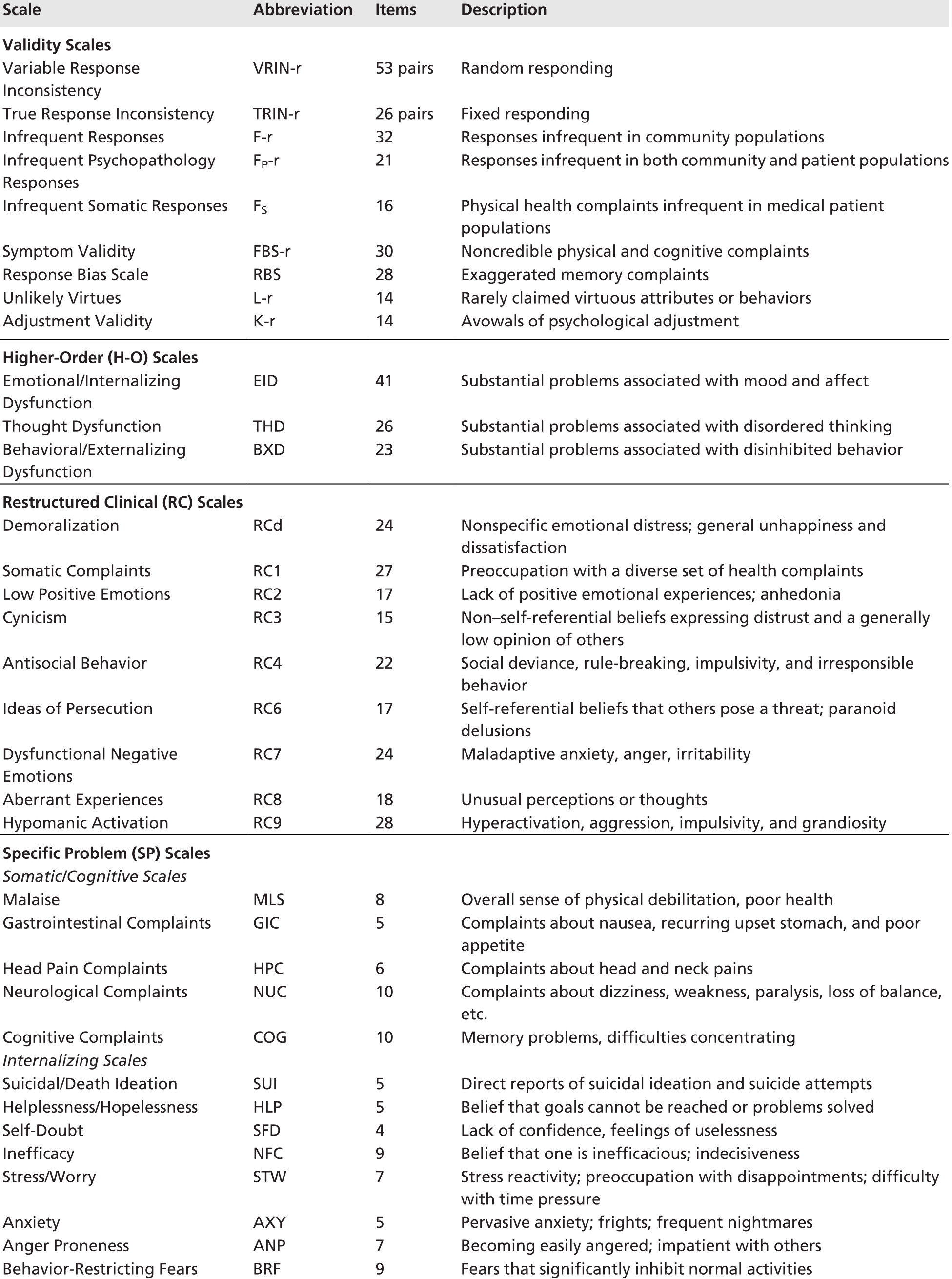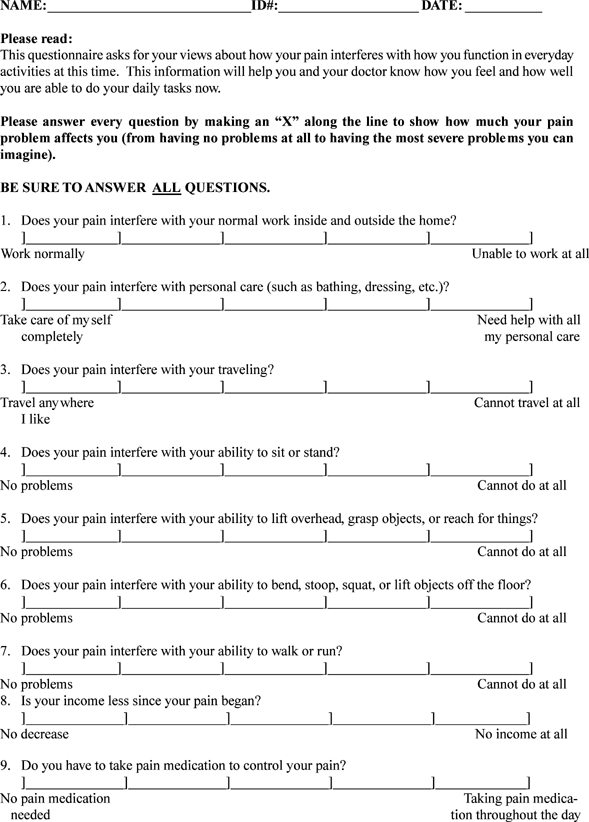

NDI seems to be the best instrument for measuring NP-related disability, since its results are the most consistent with patient's assessment of their own clinical status and evolution. ConclusionĪlthough most psychometric characteristics of NDI, NPQ and COM are similar, those from the latter one are worse and its use may lead to patients' evolution seeming more positive than it actually is.

Correlation between COM and NPQ: r = 0.63 on day 1, r = 0.71 on day 15.

Correlation between NDI and NPQ: r = 0.84 on day 1, r = 0.91 on day 15. Correlations with VAS, CSQ and SF-12 were similar for NDI and NPQ (absolute values between 0.36 and 0.50 on day 1, between 0.38 and 0.70 on day 15), and slightly lower for COM (between 0.36 and 0.48 on day 1, and between 0.33 and 0.61 on day 15). Validity: Results of NDI, NPQ and COM were consistent with the external criterion for disability, whereas only those from NDI were consistent with the one for pain. Sensitivity to change: Effect size for patients having worsened, not changed and improved between days 1 and 15, according to the external criterion for disability: NDI: -0.24, 0.15, 0.66 NPQ: -0.14, 0.06, 0.67 COM: 0.05, 0.19, 0.92. Minutes needed to fill out the questionnaires : NDI. ResultsĬomprehensibility of NDI and COM were good. In the pilot phase, patients' understanding of each item in the NDI and COM was assessed, and on day 1 test-retest reliability was estimated by giving a second NDI and COM in which the name of the questionnaires and the order of the items had been changed. Patients' self-assessment was used as the external criterion for pain and disability. Neck pain (VAS), referred pain (VAS), disability (NDI, COM and NPQ), catastrophizing (CSQ) and quality of life (SF-12) were measured on their first visit and 14 days later. The study was done in 9 primary care Centers and 12 specialty services from 9 regions in Spain, with 221 acute, subacute and chronic patients who visited their physician for NP: 54 in the pilot phase and 167 in the validation phase. Translation/re-translation of the English versions of the NDI and the COM was done blindly and independently by a multidisciplinary team. The objectives of this study were to translate and culturally adapt the Spanish version of the Neck Disability Index Questionnaire (NDI), and the Core Outcome Measure (COM), to validate its use in Spanish speaking patients with non-specific neck pain (NP), and to compare their psychometric characteristics with those of the Spanish version of the Northwick Pain Questionnaire (NPQ). There was no Spanish version of NDI or COM for which psychometric characteristics were known.

The NDI, COM and NPQ are evaluation instruments for disability due to NP. Psychometric characteristics of the Spanish version of instruments to measure neck pain disabilityīMC Musculoskeletal Disorders volume 9, Article number: 42 ( 2008)


 0 kommentar(er)
0 kommentar(er)
